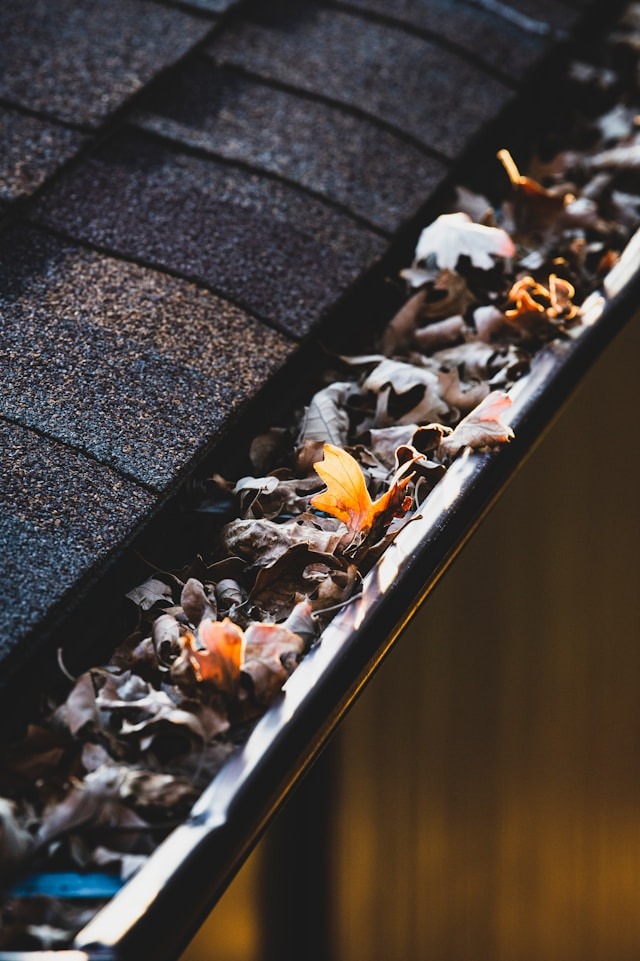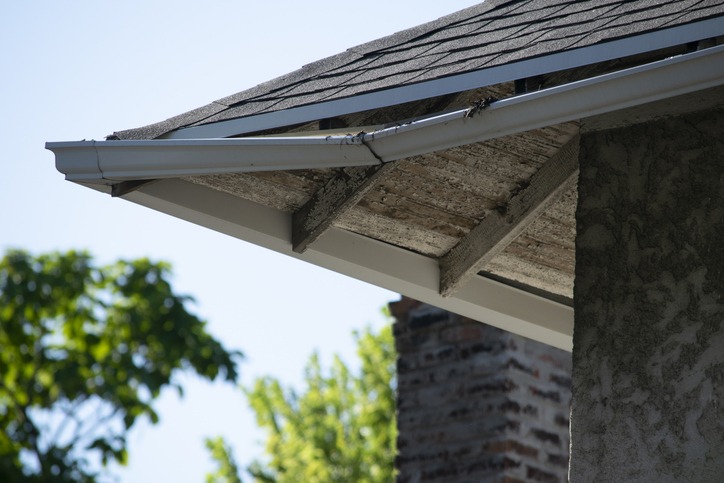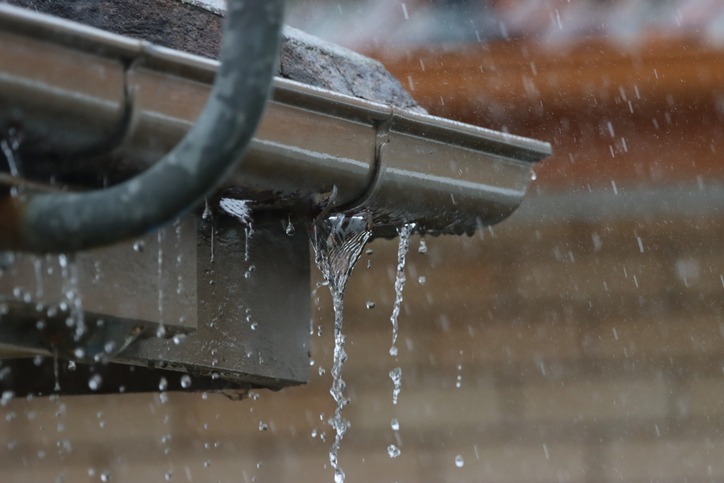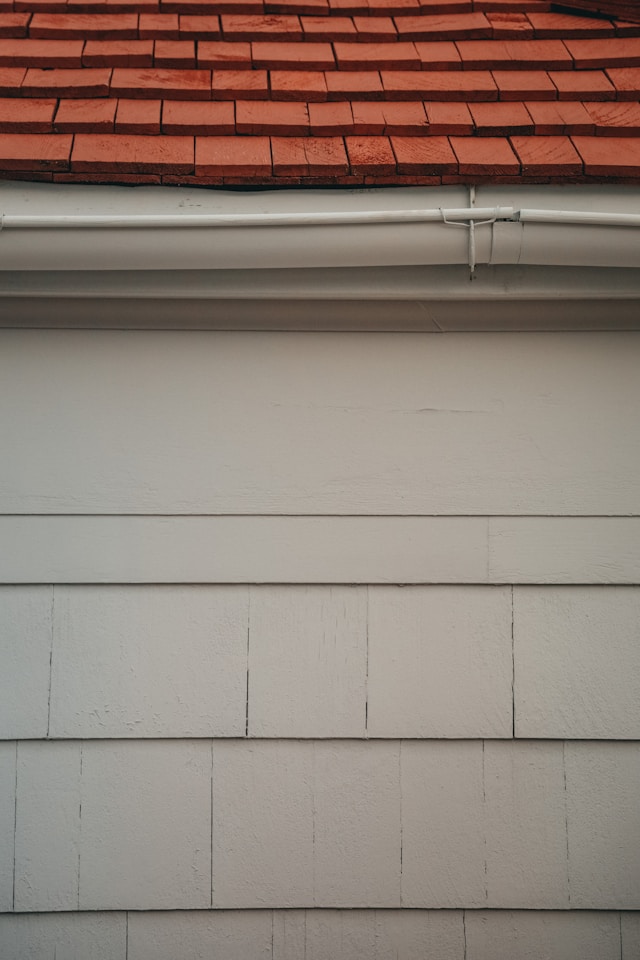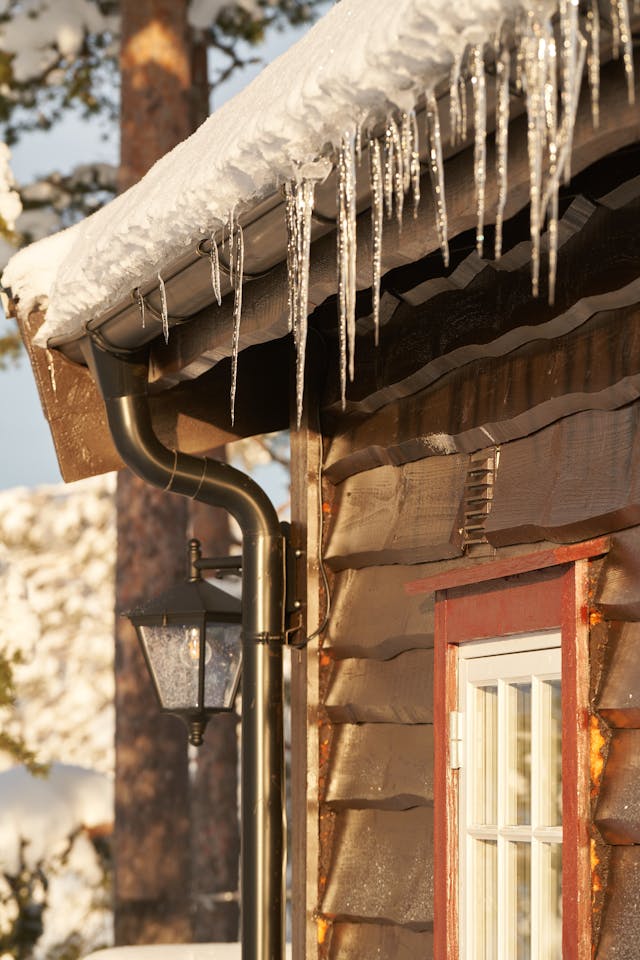You’ve got gutter problems? Let’s fix them. Clogged gutters overflow, so clean them out twice a year or install gutter guards. Sagging gutters? Replace those hangers and check your drainage. Leaking? Seal small holes with caulk and large ones with a patch kit. If your gutters aren’t sloping right, adjust their pitch to prevent water damage. Blocked downspouts? Clear them to stop overflows. Worried about rust? Choose corrosion-resistant materials and keep gutters clean. Ice dams in winter? Improve attic insulation and ventilation. There’s a straightforward fix for each issue, and uncovering them can save your home from damage.
Key Takeaways
- Clear clogged gutters and downspouts by regular cleaning or installing gutter guards.
- Fix sagging and damaged gutters by replacing gutter hangers and ensuring proper drainage.
- Seal small leaks with waterproof caulk and use patching kits for larger gaps to prevent water damage.
- Adjust gutter slope to 1/4 inch per 10 feet to avoid water pooling and foundation damage.
- Prevent rust and corrosion by choosing corrosion-resistant materials and applying rust-inhibiting primer.
Clogged Gutters and Downspouts
One common issue you’ll face with your gutter system is clogged gutters and downspouts, often filled with leaves and twigs that block water flow. When these essential pathways get blocked, water can’t move freely. This leads to overflowing gutters, which, in turn, can cause serious water damage to your roof, walls, and even the foundation of your house. It’s a slippery slope from a simple obstruction to costly repairs.
To dodge these issues, regular maintenance is your best friend. You’ve got to clean those gutters at least twice a year to make sure they’re doing their job right. Spring and fall are key times for this task, aligning with when debris typically accumulates the most. But there’s more you can do to keep clogs at bay. Installing gutter guards is a savvy move. These handy devices can drastically reduce the amount of debris that ends up in your gutters, cutting down on the frequency of clogs.
Sagging and Damaged Gutters
Sagging gutters, often the result of hardware failure or incorrect drainage, can lead to severe structural issues if not addressed promptly. You don’t want water pouring over the sides, soaking your foundation, and causing erosion. To nip this problem in the bud, you’ve got to act fast and smart.
Here’s how you can tackle sagging gutters effectively:
- Inspect Regularly: Make it a habit to check your gutters, especially after heavy storms. Catching an issue early can save you a headache later.
- Replace Gutter Hangers: If you spot sagging, it’s likely time to replace gutter hangers. Grab a ladder, screwdriver, and some screws, and secure those gutters back in place.
- Ensure Proper Drainage: Incorrect drainage is a big no-no. Make sure your gutters are sloping correctly to prevent water buildup.
- Prevent Gutter Collapse: Regular maintenance and inspection can ward off a potential collapse. Don’t wait until it’s too late.
- Take Early Action: Replacing damaged gutter hangers promptly can avoid more costly repairs down the line.
Leaking Gutter Solutions
If you’ve noticed your gutters leaking, it’s important to act swiftly to prevent water damage and mold growth. Leaky gutters aren’t just a nuisance; they’re a direct threat to the integrity of your home. Luckily, there are straightforward solutions to tackle this issue head-on.
For small holes and cracks, grab some waterproof caulk. This simple fix can seal those leaks and protect your home. It’s a quick, effective way to stop water from sneaking through those tiny openings. Just clean the area, apply the caulk, and let it dry. You’ll have plugged those pesky leaks in no time.
Bigger holes demand a bit more elbow grease. That’s where patching kits come into play. These kits are designed to cover larger gaps and prevent further leaks. Follow the instructions closely, and you’ll have your gutters holding water like they’re supposed to.
Considering a long-term solution? Seamless gutters might be your best bet. They minimize the risk of leaks by eliminating the seams where leaks often occur. While they might be an investment upfront, seamless gutters save you from constant repairs down the line.
Don’t let leaky gutters dampen your spirits or your home. Tackle them head-on, and keep your home safe and dry.
Correcting Improper Gutter Slope
Ensuring your gutters have the correct incline is vital to preventing water buildup and safeguarding your home’s foundation. Proper gutter slope is essential for effective water flow and drainage, guiding water smoothly towards the downspouts. But what happens when you’re dealing with an improper gutter angle?
Adjusting the gutter pitch is your solution. This means you’ll have to reposition your gutters slightly to achieve the ideal slope—typically 1/4 inch per 10 feet of gutter length. Addressing an improper gutter incline early can prevent a host of issues, from annoying water pooling to serious structural damage.
Here’s why correcting the slope matters:
- Prevents water pooling: Ensuring a proper gutter angle keeps water moving, avoiding stagnant water that can attract pests or lead to gutter corrosion.
- Avoids overflow: An improper gutter angle can cause water to spill over the sides, potentially damaging your home’s foundation and landscaping.
- Safeguards against structural damage: Consistent water overflow can weaken your home’s foundation over time.
- Reduces the need for costly repairs: Proactively adjusting the gutter angle can save you money and headaches down the line.
- Improves gutter efficiency: A proper gutter slope ensures water is directed efficiently towards the downspouts, reducing the risk of blockages and leaks.
Correcting an improper gutter angle isn’t just a maintenance task—it’s a proactive step towards protecting your home.
Resolving Overflow Issues
Facing overflow issues with your gutters? You’ll need to tackle blocked downspouts and consider adjusting your gutter’s slope. These steps are essential in ensuring your home stays dry and damage-free.
Clearing Blocked Downspouts
To resolve gutter overflow issues, start by clearing blocked downspouts using a plumber’s snake or garden hose. Blockages can cause water to back up, leading to potential damage to your home’s foundation and landscaping. Here’s how you can tackle this problem effectively:
- Use a plumber’s snake to dislodge any debris causing blockages in your downspouts.
- Flush out debris with a powerful stream from a garden hose.
- Ensure downspouts are securely attached to your home to prevent future issues.
- Extend downspouts away from your house to direct water safely away.
- Regularly inspect and clean downspouts to keep water flowing freely and prevent overflow.
Addressing blocked downspouts promptly will help maintain your gutter’s efficiency and protect your home from water damage.
Adjusting Gutter Slope
Adjusting your gutters’ slope to the ideal 1/4 inch per 10 feet guarantees proper water flow and prevents overflow issues. If you’ve noticed pooling or spillovers, the pitch of your gutters likely needs a tweak. It’s not just about moving water; it’s about safeguarding your home from water damage. Using a level, you can pinpoint where adjustments are necessary. This simple step ensures that water flows smoothly towards downspouts, avoiding any stagnation that could spell trouble.
Don’t let an incorrect slope put undue stress on your gutter system. Rehanging gutters with the correct pitch is a preventive measure that pays off. It’s a straightforward fix that wards off potential problems, keeping your home’s foundation safe and dry. Adjust, check, and secure the right slope—it’s your first line of defense against water woes.
Preventing Rust and Corrosion
To keep your gutters strong and leak-free, it’s important to catch rust early. Opting for corrosion-resistant materials like copper or stainless steel can save you a headache down the line. Regular maintenance and protective coatings are your best bet against the wear and tear of time.
Identifying Rust Early
Spotting rust early is essential to prevent your gutters from weakening and leaking. When rust sets in, your gutters are on a fast track to damage and potential failure. But you can beat rust at its own game with some proactive steps:
- Inspect your gutters regularly for any signs of rust or corrosion.
- Keep gutters clean to avoid debris buildup that holds moisture.
- Apply a rust-inhibiting primer to areas prone to rust.
- Touch up scratches or dents that can expose metal to elements.
- Ensure proper drainage to prevent water from pooling and causing rust.
Corrosion-Resistant Materials
Selecting corrosion-resistant materials for your gutters is a wise choice to prevent rust and guarantee longevity. Copper and stainless steel stand out as top choices, thanks to their high resistance to corrosion. While aluminum and galvanized steel gutters might seem appealing at first, they’re more susceptible to rust and corrosion over time. Remember, rust doesn’t just look bad—it weakens gutters, leading to damage and leaks. To keep your gutters in top shape, don’t skimp on regular cleaning and maintenance. Additionally, applying a rust-inhibiting primer or coating can offer extra protection against corrosion. By choosing the right materials and taking proactive steps, you’ll effectively prevent rust and extend the life of your gutter system.
Eliminating Ice Dams
Getting rid of ice dams quickly is crucial to prevent water from backing up and causing damage to your roof and gutters. Ice dams can be a real hassle, leading to leaks and significant damage if not dealt with. Avoiding these icy blockages guarantees that your home stays dry and damage-free during the cold months.
Here are five crucial steps to address and prevent ice dams:
- Confirm proper attic insulation: Maintaining a consistent roof temperature prevents snow from melting and refreezing at the gutters.
- Use a roof rake: Safely remove snow and ice buildup from your gutters to prevent the formation of ice dams.
- Enhance attic ventilation: This helps to keep the roof temperature even, reducing the chances of snow melting and refreezing.
- Seal attic air leaks: Prevent warm indoor air from reaching the roof and melting the snow.
- Install heat cables: For chronic ice dam issues, heat cables can provide a direct method of preventing ice buildup in gutters.
Confronting ice dams directly saves you from water backup, potential leaks, and costly repairs. Stay vigilant and proactive in your efforts, ensuring your home remains safe and dry all winter long.
Frequently Asked Questions
How Do You Fix Gutters That Are Not Draining?
To rectify gutters not draining, begin with blockage removal by flushing them out. Consider downspout cleaning to enhance flow and installing gutter guards to safeguard against future issues. This guarantees your gutters work efficiently.
What if Gutters Are Not Pitched Properly?
If your gutters aren’t pitched properly, you’re likely facing installation errors. You’ll need to measure the pitch and adjust the slope. This fixes pooling and overflow, ensuring water drains as it should.
How Can I Make My Gutters Flow Better?
To improve your gutters’ flow, start by installing gutter guards, adding downspout extensions, and sticking to a regular cleaning schedule. These steps will keep water moving smoothly and prevent blockages and overflow.
Why Does My Guttering Keep Coming Apart?
Your guttering keeps coming apart due to improper installation, material fatigue, and weather impact. These factors weaken joints, causing frequent separations. It is crucial to address these issues promptly to guarantee your gutters function correctly.
Conclusion
So, you’ve tackled clogged gutters, fixed the sagging, sealed those leaks, adjusted the slope, handled overflow, fought off rust, and even beat the ice dams. Great job! Remember, keeping your gutters in top shape isn’t just about fixing problems as they pop up; it’s about regular checks and maintenance. Don’t wait for a downpour to remind you. A little effort now saves a ton of trouble later. Stay vigilant and keep those gutters flowing smoothly.

